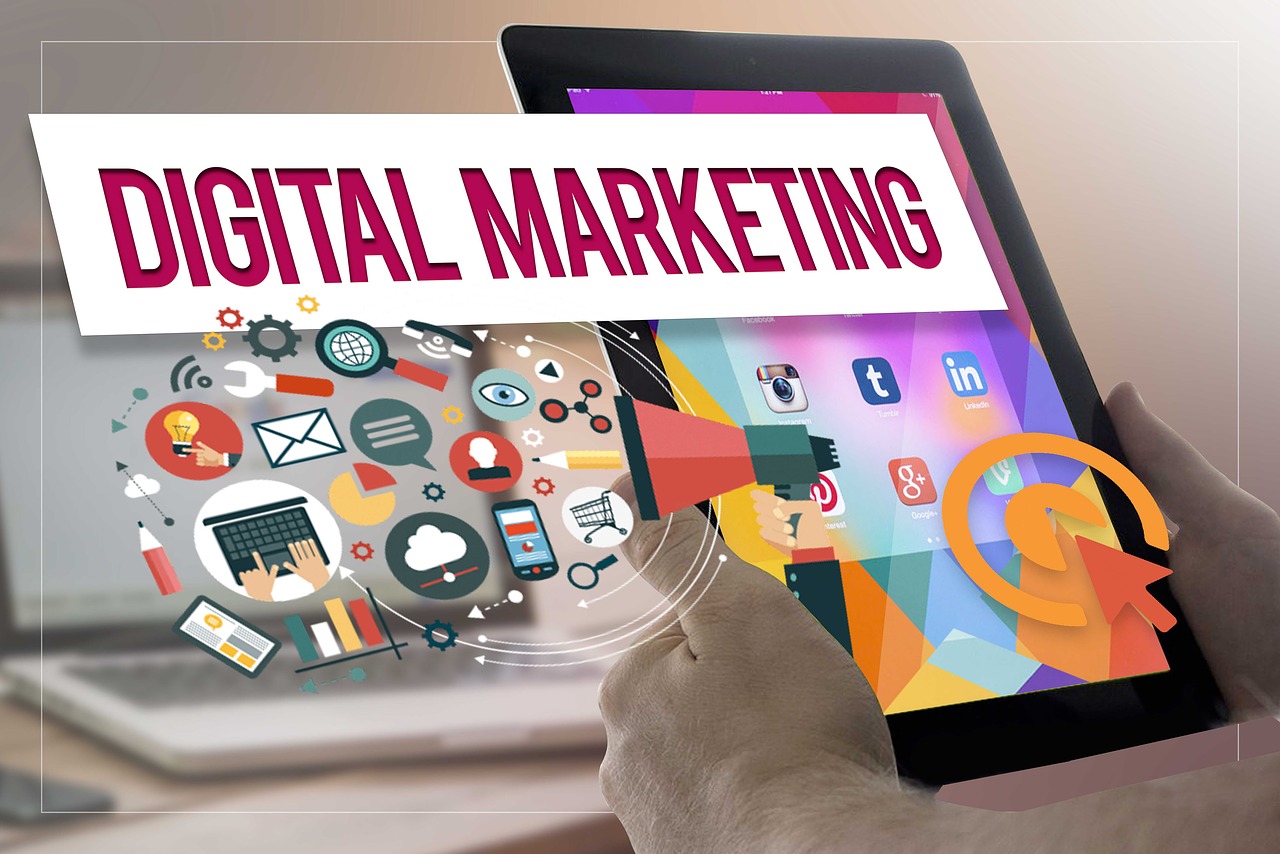Digital Marketing and SEO: Comprehensive Guide to Strategies and Best Practices
Introduction
In the digital age, businesses and organizations are increasingly relying on digital marketing and search engine optimization (SEO) to achieve their goals. Digital marketing encompasses a broad range of strategies aimed at reaching and engaging customers through various online channels, while SEO focuses specifically on improving a website’s visibility and ranking in search engine results. This article provides a comprehensive guide to digital marketing and SEO, exploring their key components, strategies, best practices, and the interplay between the two.
1. Understanding Digital Marketing
1.1 What is Digital Marketing?
Digital marketing refers to the use of digital channels, tools, and strategies to promote products, services, or brands to a target audience. It encompasses a wide array of activities, including online advertising, content marketing, social media engagement, email marketing, and more.
Key Components of Digital Marketing:
- Content Marketing: Creating and distributing valuable content to attract and engage customers.
- Social Media Marketing: Using social media platforms to connect with audiences, build brand awareness, and drive engagement.
- Email Marketing: Sending targeted emails to nurture leads, build relationships, and drive conversions.
- Online Advertising: Utilizing paid advertising channels, such as search ads, display ads, and social media ads, to reach and convert customers.
- Analytics and Reporting: Measuring and analyzing digital marketing performance to optimize strategies and achieve goals.
1.2 The Importance of Digital Marketing
Digital marketing is crucial for businesses in the modern landscape due to:
- Widespread Internet Usage: With billions of people using the internet daily, digital marketing provides a way to reach a vast and diverse audience.
- Cost-Effectiveness: Digital marketing often offers a more affordable alternative to traditional marketing methods, such as print or TV advertising.
- Targeted Reach: Digital marketing allows for precise targeting based on demographics, interests, and behavior, ensuring that messages reach the most relevant audience.
- Measurable Results: Digital marketing provides detailed analytics and performance metrics, enabling businesses to track ROI and make data-driven decisions.
2. Understanding SEO
2.1 What is SEO?
Search Engine Optimization (SEO) is the practice of optimizing a website to improve its visibility and ranking in search engine results pages (SERPs). The goal of SEO is to increase organic traffic by making a website more attractive to search engines like Google, Bing, and Yahoo.
Key Components of SEO:
- On-Page SEO: Optimizing individual pages on a website to improve their relevance and performance. This includes optimizing content, meta tags, headers, and images.
- Off-Page SEO: Building the website’s authority and credibility through external factors, such as backlinks, social signals, and brand mentions.
- Technical SEO: Enhancing the technical aspects of a website to improve its crawlability and indexability, including site speed, mobile-friendliness, and URL structure.
- Local SEO: Optimizing a website to rank well in local search results and attract local customers. This includes optimizing Google My Business profiles and local citations.
2.2 The Importance of SEO
SEO is essential for several reasons:
- Increased Visibility: A higher ranking in search results increases the likelihood of attracting organic traffic and potential customers.
- Credibility and Trust: Users tend to trust websites that appear at the top of search results, associating higher rankings with credibility and authority.
- Cost-Effectiveness: Unlike paid advertising, SEO generates organic traffic without ongoing costs per click, making it a cost-effective long-term strategy.
- Competitive Advantage: Effective SEO helps businesses stay ahead of competitors by capturing more search traffic and improving online presence.
3. Digital Marketing Strategies
3.1 Content Marketing
Content marketing involves creating and sharing valuable content to attract and engage a target audience. Key elements include:
- Content Creation: Developing high-quality content that addresses the needs and interests of your audience. This can include blog posts, articles, videos, infographics, and more.
- Content Distribution: Sharing content through various channels, such as social media, email newsletters, and content syndication platforms.
- Content Optimization: Using SEO best practices to optimize content for search engines, including keyword research, meta tags, and internal linking.
3.2 Social Media Marketing
Social media marketing focuses on using social media platforms to connect with audiences and drive engagement. Key components include:
- Platform Selection: Choosing the right social media platforms based on your target audience and business goals. Common platforms include Facebook, Twitter, Instagram, LinkedIn, and TikTok.
- Content Strategy: Creating and sharing engaging content tailored to each platform and audience. This can include posts, stories, videos, and live streams.
- Community Management: Engaging with followers, responding to comments and messages, and building relationships with your audience.
3.3 Email Marketing
Email marketing involves sending targeted emails to nurture leads and drive conversions. Key practices include:
- List Building: Growing and maintaining an email list of subscribers who are interested in your products or services.
- Segmentation: Segmenting your email list based on demographics, behavior, and preferences to send personalized and relevant content.
- Campaign Design: Crafting compelling email campaigns with clear calls-to-action and engaging content. This can include newsletters, promotional offers, and product updates.
3.4 Online Advertising
Online advertising encompasses various paid channels to reach and convert customers. Key types include:
- Search Ads: Displaying ads on search engine results pages based on keywords and search queries. Examples include Google Ads and Bing Ads.
- Display Ads: Placing visual ads on websites and apps across the internet to increase brand visibility and drive traffic.
- Social Media Ads: Running targeted ads on social media platforms to reach specific audiences and achieve marketing objectives.
3.5 Analytics and Reporting
Analytics and reporting are crucial for measuring and optimizing digital marketing performance. Key practices include:
- Tracking Metrics: Monitoring key performance indicators (KPIs) such as traffic, conversions, engagement, and ROI.
- Data Analysis: Analyzing data to identify trends, insights, and areas for improvement.
- Reporting: Creating regular reports to communicate performance results and inform decision-making.
4. SEO Strategies and Best Practices
4.1 Keyword Research
Keyword research involves identifying the terms and phrases that users search for and optimizing your content around those keywords. Key practices include:
- Keyword Tools: Using tools such as Google Keyword Planner, SEMrush, and Ahrefs to discover relevant keywords and search volume.
- Competitor Analysis: Analyzing competitors’ keywords and content to identify opportunities and gaps.
- Long-Tail Keywords: Targeting specific, long-tail keywords to attract more qualified traffic and reduce competition.
4.2 On-Page SEO
On-page SEO focuses on optimizing individual pages to improve their relevance and performance. Key elements include:
- Title Tags: Creating compelling and keyword-rich title tags that accurately describe the page content.
- Meta Descriptions: Writing persuasive meta descriptions that encourage users to click through to your website.
- Headers and Subheaders: Using header tags (H1, H2, H3) to structure content and include relevant keywords.
- Content Optimization: Ensuring that content is valuable, relevant, and includes target keywords naturally.
- Image Optimization: Using descriptive file names and alt text for images to improve accessibility and search visibility.
4.3 Off-Page SEO
Off-page SEO involves building the website’s authority and credibility through external factors. Key practices include:
- Backlink Building: Acquiring high-quality backlinks from reputable websites to enhance domain authority and search rankings.
- Social Signals: Leveraging social media activity to drive traffic and signal relevance to search engines.
- Brand Mentions: Building brand recognition and credibility through mentions and reviews across the web.
4.4 Technical SEO
Technical SEO focuses on improving the technical aspects of a website to enhance its crawlability and indexability. Key practices include:
- Site Speed: Optimizing website speed to reduce loading times and improve user experience.
- Mobile-Friendliness: Ensuring that the website is responsive and provides a seamless experience on mobile devices.
- URL Structure: Creating clean and descriptive URLs that are easy for search engines and users to understand.
- Sitemap and Robots.txt: Using sitemaps and robots.txt files to guide search engine crawlers and improve indexing.
4.5 Local SEO
Local SEO focuses on optimizing a website to rank well in local search results and attract local customers. Key practices include:
- Google My Business: Claiming and optimizing your Google My Business listing with accurate business information, photos, and reviews.
- Local Citations: Building and maintaining consistent local citations across directories and platforms.
- Local Keywords: Incorporating location-specific keywords into content, meta tags, and listings.
5. The Intersection of Digital Marketing and SEO
5.1 Synergy Between Digital Marketing and SEO
Digital marketing and SEO are interconnected and mutually reinforcing:
- Content Creation: High-quality content created for digital marketing purposes can also be optimized for SEO, driving organic traffic and improving search rankings.
- Social Media: Social media activity can drive traffic to your website and generate backlinks, which contribute to SEO efforts.
- Email Marketing: Email campaigns can promote content and drive traffic to your website, supporting SEO goals.
5.2 Integrated Strategies
Combining digital marketing and SEO strategies can enhance overall effectiveness:
- Content Strategy: Aligning content marketing efforts with SEO goals to create valuable, keyword-rich content that attracts and engages users.
- Cross-Channel Campaigns: Coordinating online advertising, social media, and email campaigns with SEO efforts to drive traffic and improve search visibility.
- Data-Driven Decisions: Using insights from analytics and SEO performance to inform and optimize digital marketing strategies.
6. Measuring Success in Digital Marketing and SEO
6.1 Key Performance Indicators (KPIs)
Measuring success involves tracking key performance indicators (KPIs) to evaluate the effectiveness of your efforts:
- Traffic Metrics: Monitoring website traffic, including total visits, unique visitors, and page views.
- Engagement Metrics: Measuring user engagement through metrics such as bounce rate, average session duration, and pages per session.
- Conversion Metrics: Tracking conversions, including form submissions, purchases, and goal completions.
- SEO Metrics: Analyzing search rankings, organic traffic, and backlink profiles.
6.2 Tools and Platforms
Various tools and platforms can help measure and analyze digital marketing and SEO performance:
- Google Analytics: Provides insights into website traffic, user behavior, and conversion tracking.
- Google Search Console: Offers data on search performance, indexing, and technical issues.
- SEMrush: Provides keyword research, competitive analysis, and SEO performance tracking.
- Ahrefs: Offers backlink analysis, keyword research, and site audit features.
6.3 Continuous Improvement
Regularly reviewing and optimizing digital marketing and SEO efforts is essential for ongoing success:
- Performance Analysis: Regularly analyzing performance data to identify trends, strengths, and areas for improvement.
- A/B Testing: Conducting A/B tests to compare different strategies and optimize campaigns for better results.
- Adaptation: Staying updated with industry trends and changes in algorithms to adapt strategies and maintain effectiveness.
7. Future Trends in Digital Marketing and SEO
7.1 Emerging Technologies
New technologies are shaping the future of digital marketing and SEO:
- Artificial Intelligence (AI): AI is being used to enhance personalization, automate tasks, and improve decision-making in digital marketing.
- Voice Search: The rise of voice-activated devices is changing search behavior and influencing SEO strategies.
- Chatbots and Conversational Marketing: Chatbots and conversational interfaces are becoming increasingly popular for engaging with users and providing personalized experiences.
7.2 Changing User Behavior
User behavior is evolving, and digital marketing and SEO strategies must adapt:
- Mobile-First Indexing: Search engines are prioritizing mobile-friendly websites, making mobile optimization crucial for SEO.
- Content Consumption: Users are consuming content across various devices and platforms, requiring multi-channel and adaptive content strategies.
- Privacy and Data Protection: Increasing concerns about privacy and data protection are influencing digital marketing practices and regulations.
7.3 Evolving Search Engine Algorithms
Search engine algorithms are continually evolving, impacting SEO strategies:
- Algorithm Updates: Regular updates to search engine algorithms affect ranking factors and SEO practices.
- User Experience: Search engines are increasingly focusing on user experience, including site speed, mobile-friendliness, and content relevance.
Conclusion
Digital marketing and SEO are integral to achieving online success and reaching target audiences effectively. By understanding the key components, strategies, and best practices of both disciplines, businesses and organizations can develop comprehensive and effective marketing plans.
Digital marketing encompasses a wide range of strategies, including content marketing, social media, email marketing, and online advertising. SEO, on the other hand, focuses on optimizing websites to improve search visibility and attract organic traffic.
The intersection of digital marketing and SEO offers opportunities for synergy and enhanced performance. By integrating these efforts, businesses can achieve greater visibility, engagement, and conversions.
As technology and user behavior continue to evolve, staying informed about emerging trends and adapting strategies will be crucial for maintaining a competitive edge. Embracing new technologies, optimizing for changing algorithms, and prioritizing user experience will drive success in the dynamic landscape of digital marketing and SEO.
In conclusion, a well-rounded approach to digital marketing and SEO, combined with continuous measurement and improvement, is key to achieving long-term success in the digital realm.









